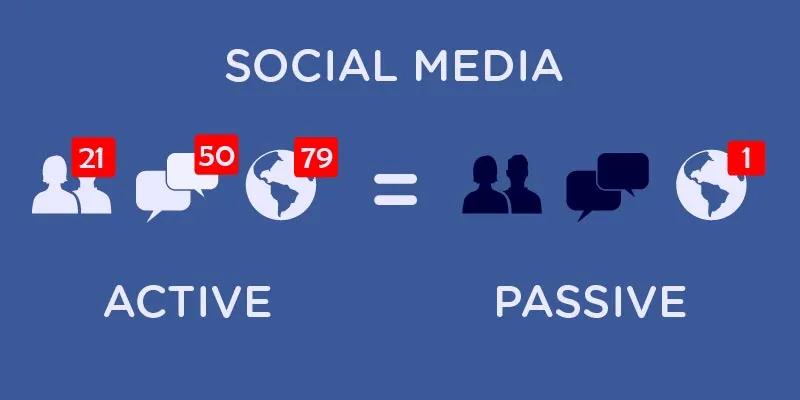How to enhance your online presence
I know I might be sounding pompous or downright boastfulwhen I say I have an extremely engaging online profile. But I do; I have a strong follower base across LinkedIn, Facebook and now building it on Twitter. If you look me up on Google, even I am surprised with the amount of data it throws upon my social presence. Picture this: after I finish a meeting with my business associates or deliver a lecture in a prominent college in Bengaluru, I usually get at least 20-25 connection requests. My question is, does anyone ever ask, “Are you an active user on any social channel?”

According to the 2016 social media update, there are 3.4 billion Internet users worldwide, of which 2.3 billion are active social media users and they are growing at a 10percent month-on-month (organically). Asia-Pacific is driving much of this growth.
Now let me give you a couple of examples.
Example one - It was date night, and I was out for dinner with my wife. It was a hectic day for both us and we hadn’t talked during the day.
Shilpa: Looks like you have a new team member and you went out for lunch to welcome him to the team today. I also saw you got connected with Shruthi and do you know the Kumars have a new puppy? They look adorable.
Shivoo:How did you know?
Shilpa: Oh, I’m a silent participant on Facebook.
Example two - I was having dinner with a Tier I analyst, Anand, from a leading analyst agency. He is also a good friend and I hadn’t met him in a while.
Anand: Customer service landscape has changed. Enterprises, product companies and also government agencies use Twitter to address their customer service issues. If you have a problem, send them a tweet and, bam, it gets attention and gets fixed.
Shivoo: But Anand, you are not active on social channels at all. How do they get you to engage?
Anand: I choose not to respond or post on the social channels. I have many Fortune 500 companies whom I advise. One Tweet from me can create havoc with their stock price. So I always stay away from providing my comments on social channels, as it can have larger implications.
These two conversations made me realise that Shilpa and Anand rarely posted status updates, uploaded any pics or did anything on their social media channels. It also points to another interesting phenomenon – I forgot they are there but they didn’t forget me.
So, that being said, I have some thoughts about being an active user, someone who actively makes contributions to social media sites, versus a passive user, who maybe observes or benefits from a site without actually sharing information on it.
Social media is like a three-legged stool. The legs are audience, activity and engagement. These remain same irrespective of whether the user is active or passive.
If my audience are active, then there will be regular activity, with users being comfortable with sharing content and engagement method will need to be tailored based on the activity data generated by the user.
But if the audience is passive, then there will little or sporadic activity.But engagement model cannot be based on analytics, and is rather emotional. Emotional engagement is not about how much content is created or at what frequency the content is being created.It's about subtle messages the passive user leaves as footprints, which the tools needs to track and use as a hook for active engagement. Our emotions are the primary reason of our on and offline actions.
Use these five tips to guide your strategy to connect emotionally with your passive social users:
- Appeal to many, but speak to one - Connect to your audience by engaging with them one on one. Like you are conversing with a friend or partner across the dinner table. One-on-one communication is much more intimate and engaging than a bull-horn approach.
- Create unique experiences – All relationships, be it with brands or people, is built on exclusivity. Give or create unique experiences, so that they automatically gravitate towards your brand and spread the word within their private network
- Never underestimate the power of emotions - Use humour, compassion, and empathy generously when crafting your message for the passive user. If you make your user smile, shed a tear, miss someone or feel their heart flutter you know there’s a pretty strong emotional bond there. These emotions are great to tap into because as humans we love to relate.
- Don’t be a flip-flopper – Take a side or opinion and stick with it. Your user views you as an authority and will base their views and decisions on that. So take a stand and stick with it, while backing your claims with stats and predictions to be authentic
- Make them think - The easiest way to connect emotionally and drive more engagement amongst your audience is to ask them questions. Ask them about their experiences with your company, your products/app, or your service
Do you have any other unique tips or tricks that you’ve used in the past to connect with your passive audience emotionally? I’d love to hear about them and if they were effective or not.
(Disclaimer: The views and opinions expressed in this article are those of the author and do not necessarily reflect the views of YourStory.)







